Humans have dreamed of flying for millennia. From the Greek legend of Icarus and Daedalus, to kite flying in China, to the development of hydrogen-filled balloons in 18th century France, to early experiments with gliders in 19th century England and Germany. Around the turn of the 20th century, advances in engine technology and aerodynamics enabled powered flight using heavier-than-air machines. Several attempts by leading designers proved unsuccessful, and the honor of the first sustained and controlled flight of a powered heavier-than-air aircraft went to two bicycle shop owners from Dayton, Ohio, Orville and Wilbur Wright. The brothers combined the mechanical experience from their business with the fundamental breakthrough invention of three-axis control to enable them to steer the aircraft and maintain its equilibrium.
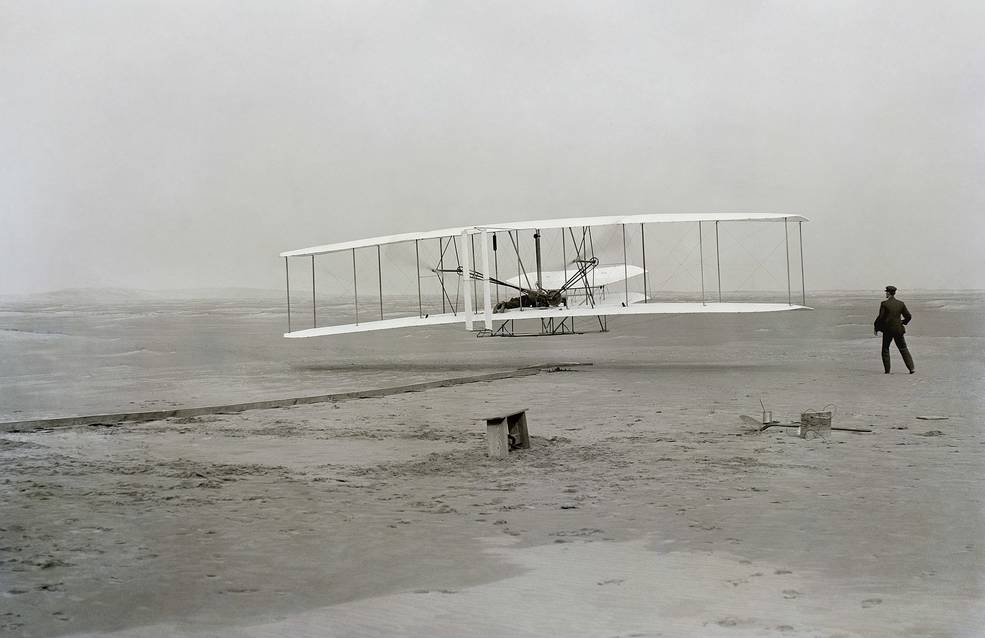
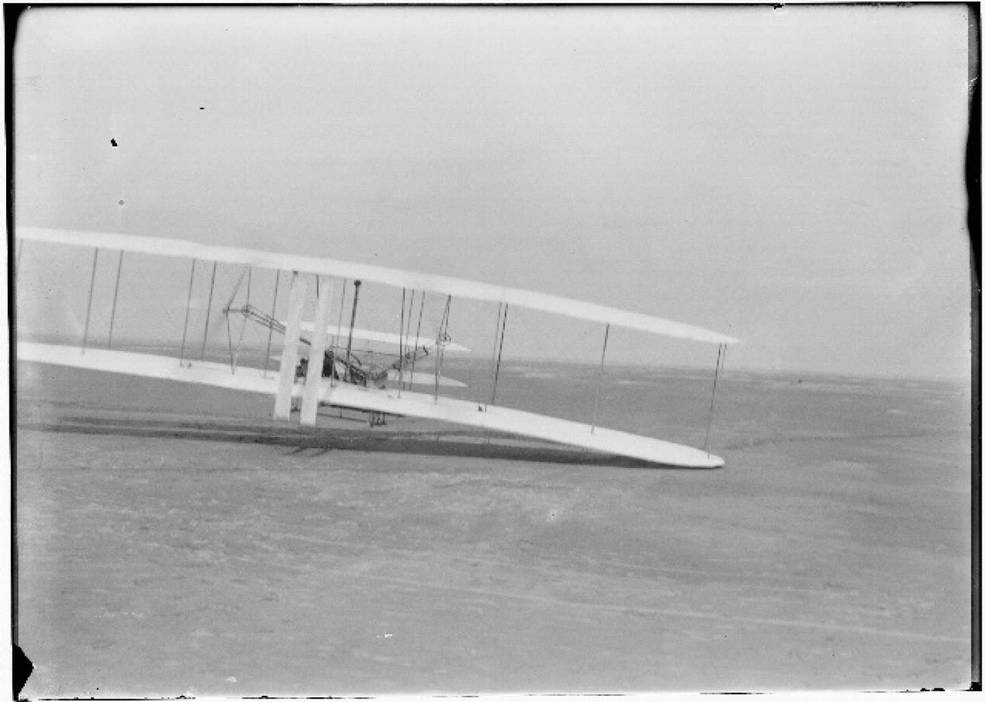
Left: Orville Wright during the first powered flight of a heavier-than-air aircraft; Wilbur
is seen to the right of the aircraft. Right: The Wright’s third flight on Dec. 17, 1903.
Credits: National Park Service
After several unsuccessful attempts, on December 17, 1903, at Kill Devil Hills near Kitty Hawk, North Carolina, Orville Wright completed the first powered flight of a heavier-than-air aircraft known as the Wright Flyer. The flight lasted just 12 seconds, traveled 120 feet, and reached a top speed of 6.8 miles per hour. An amazing feat for its day, one of the five people to witness this historic first flight snapped a photograph of the event. The brothers completed three other flights that day, taking turns piloting, the longest traveling 852 feet in 59 seconds. The highest altitude reached in any of the flights was about 10 feet.
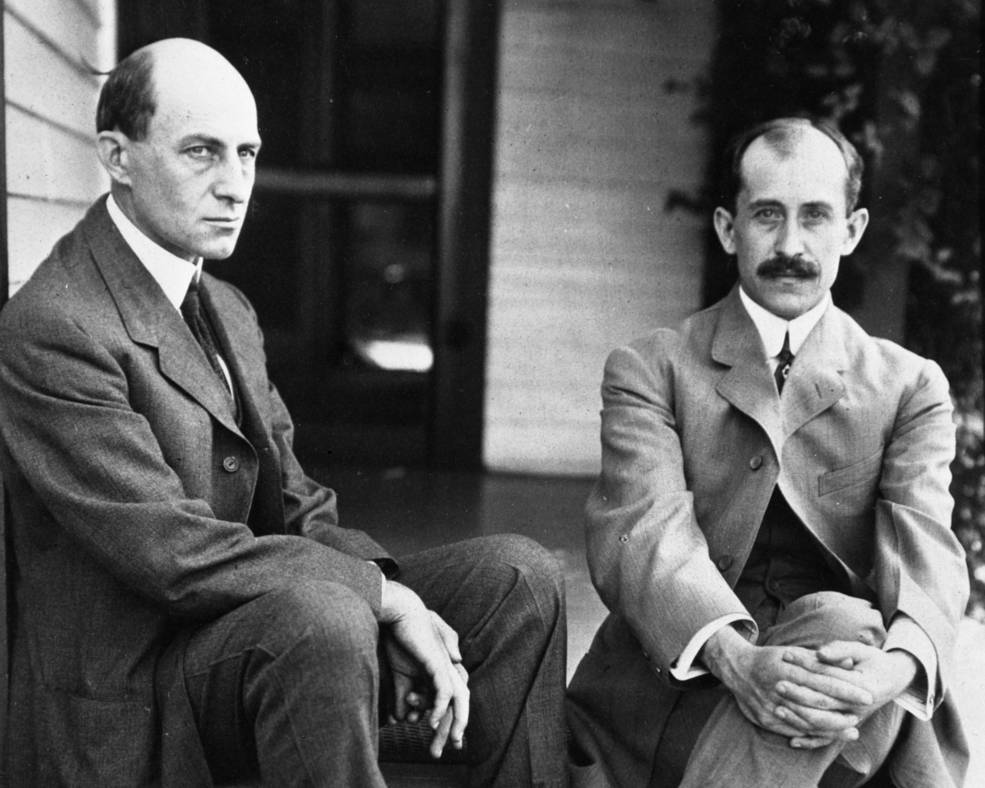
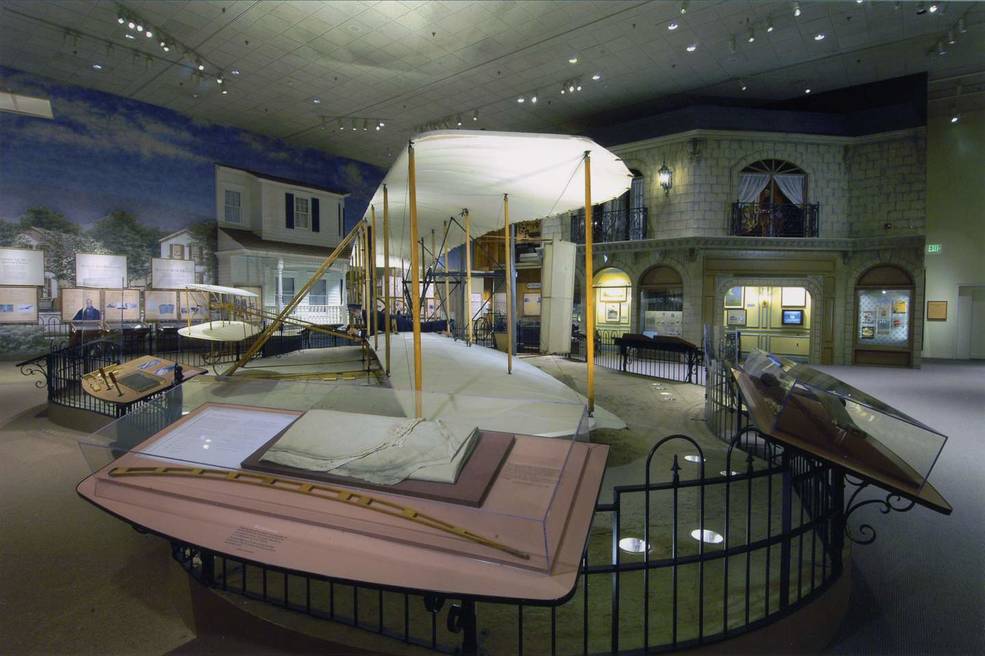
Left: Wilbur and Orville Wright. Right: The Wright Flyer at the Smithsonian
Institute’s National Air and Space Museum (NASM).
Credits: Carillon Historical Park, NASM
The Wrights continued flying, building more and more advanced aircraft, by 1905 completing a 24-mile flight in the Flyer III. Others in the United States and Europe were making advances in the rapidly expanding field of aviation, and World War I (1914-1918) saw the first use of aircraft in warfare. Within a dozen years after the first powered flight, the U.S. government formed the National Advisory Committee on Aeronautics (NACA) to advance the field of aeronautics. Research conducted at NACA facilities – Langley Aeronautical Laboratory (now NASA Langley Research Center) in Hampton, Virginia; Ames Aeronautical Laboratory (now NASA Ames Research Center) in Mountain View, California; Lewis Flight Propulsion Laboratory (now NASA Glenn Research Center) in Cleveland, Ohio; and Muroc Flight Test Unit (now NASA Armstrong Flight Research Center) near Lancaster, California – led to breakthroughs that greatly advanced the field of aeronautics including supersonic flight. In 1958, in response to Soviet advances in space flight, the U.S. government established the National Aeronautics and Space Administration (NASA), a civilian agency to lead American space activities. The new agency incorporated elements of NACA including its facilities and employees. Just 65 years after the Wrights made their pioneering flight on the sands of Kitty Hawk, Apollo 11 astronauts made humanity’s first footprints on the dusty surface of the Moon. To honor the Wrights’ accomplishment, Apollo 14 astronauts named their Lunar Module Kitty Hawk.
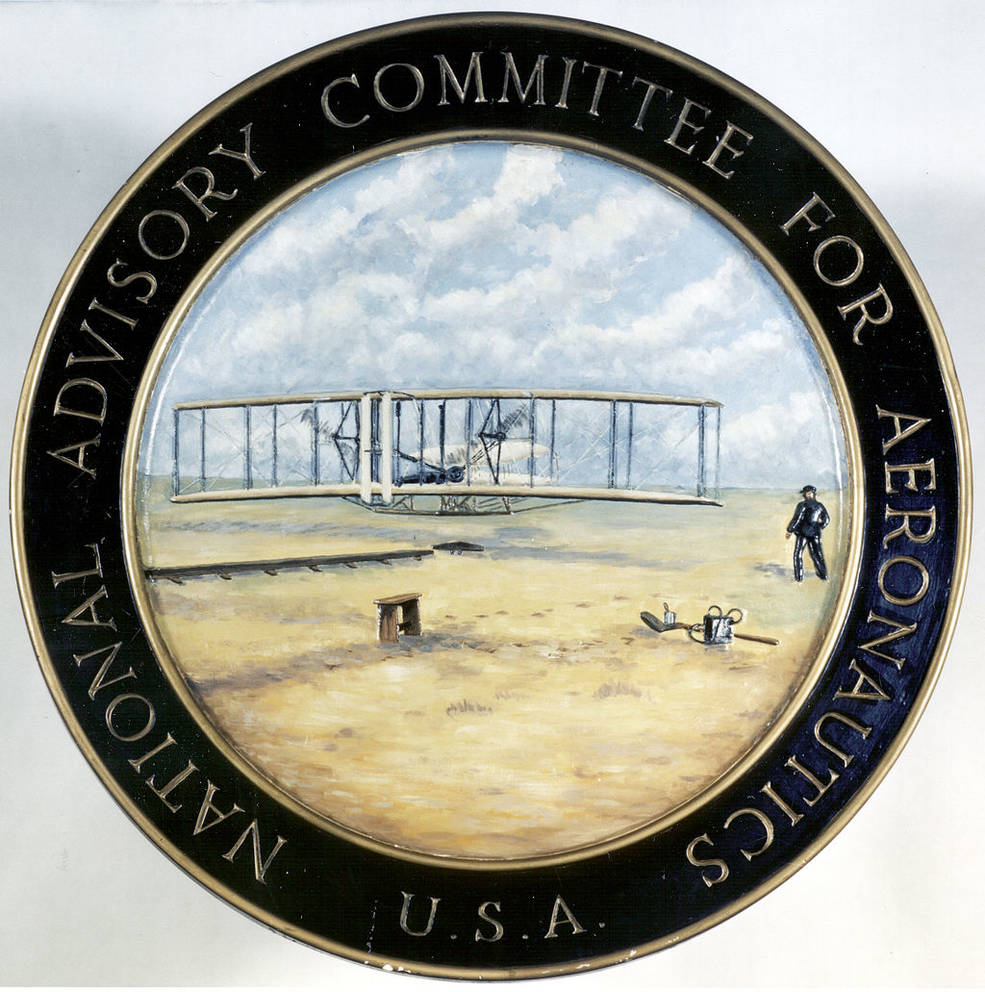
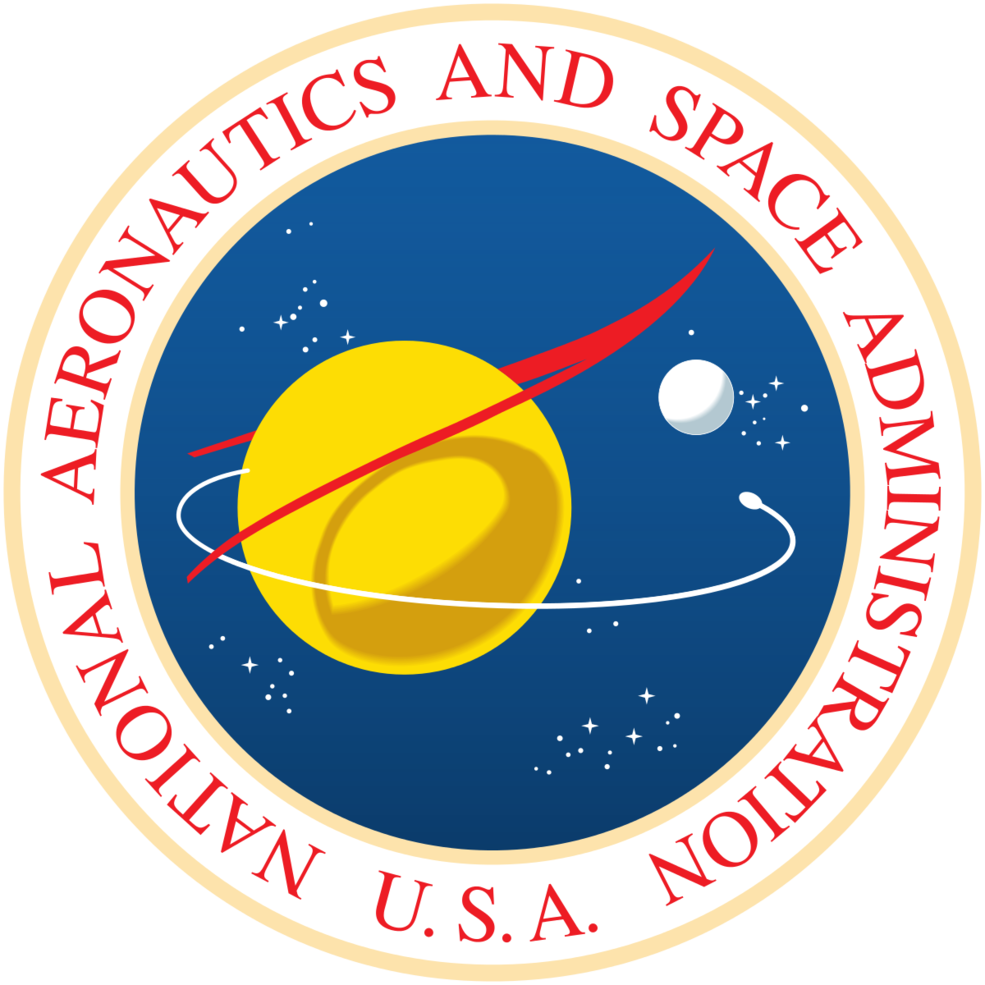
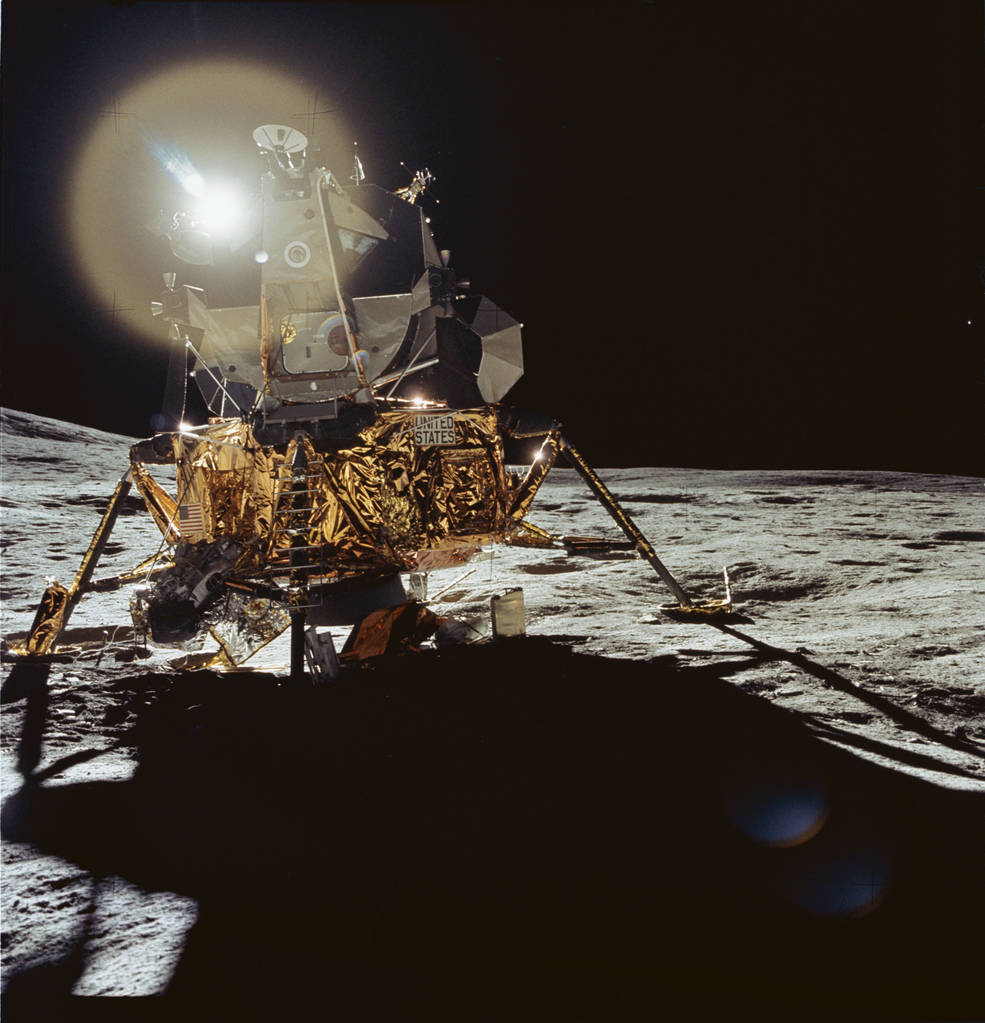
Left: Seal of the NACA, including an illustration of the first flight at Kitty Hawk.
Middle: Seal of NASA.Right: Apollo 14 Lunar Module Kitty Hawk on the surface of the Moon.
The Wright Flyer is on display in the Smithsonian Institute’s National Air and Space Museum in Washington, DC.






















